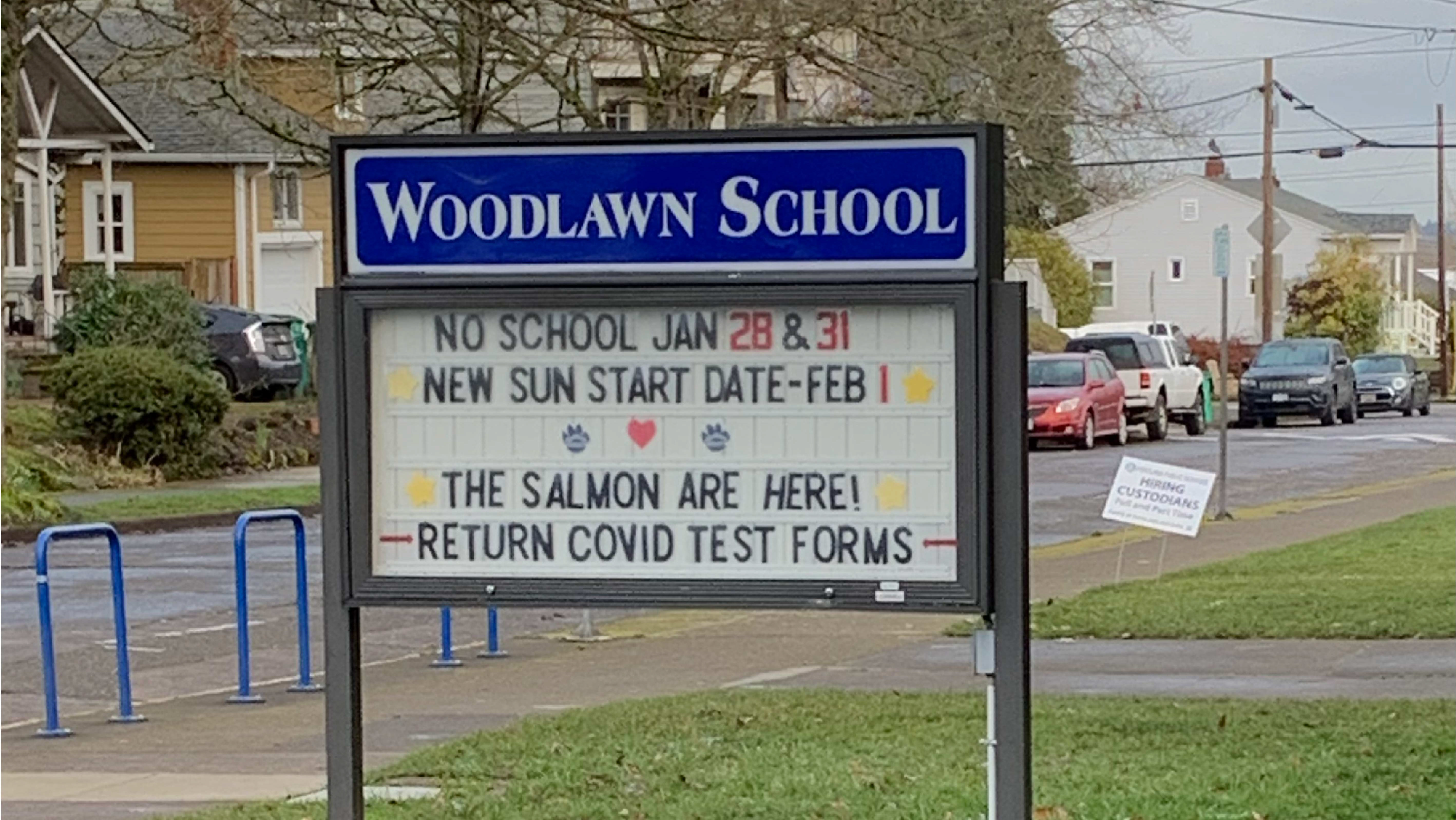North Fork klaskanine Dam #3: Fish passage restoration
Check out the story here: The Importance of Fish Passage
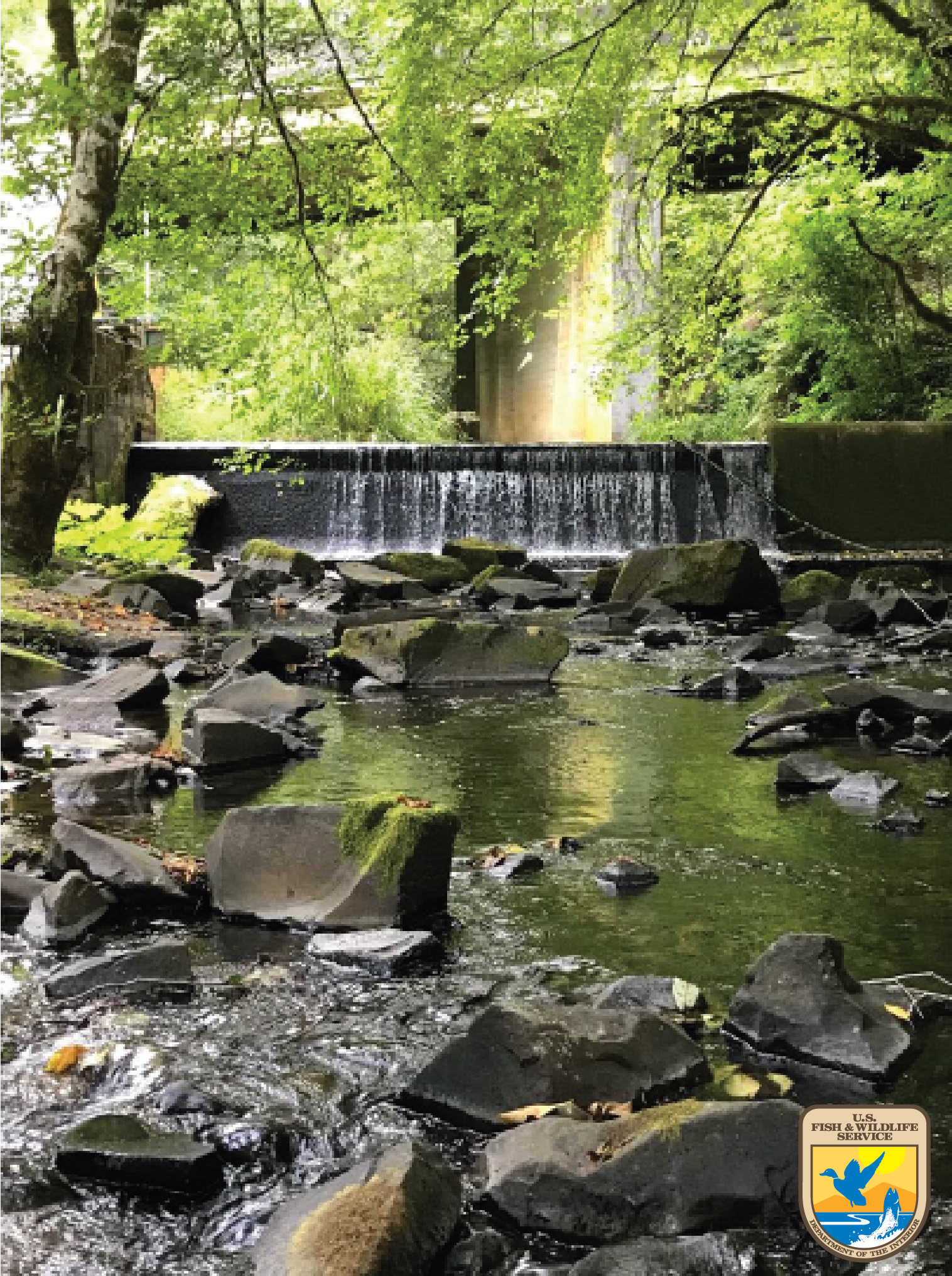
Prior to Restoration: Diversion Dam 3 with ODOT 202 abutment in the background.
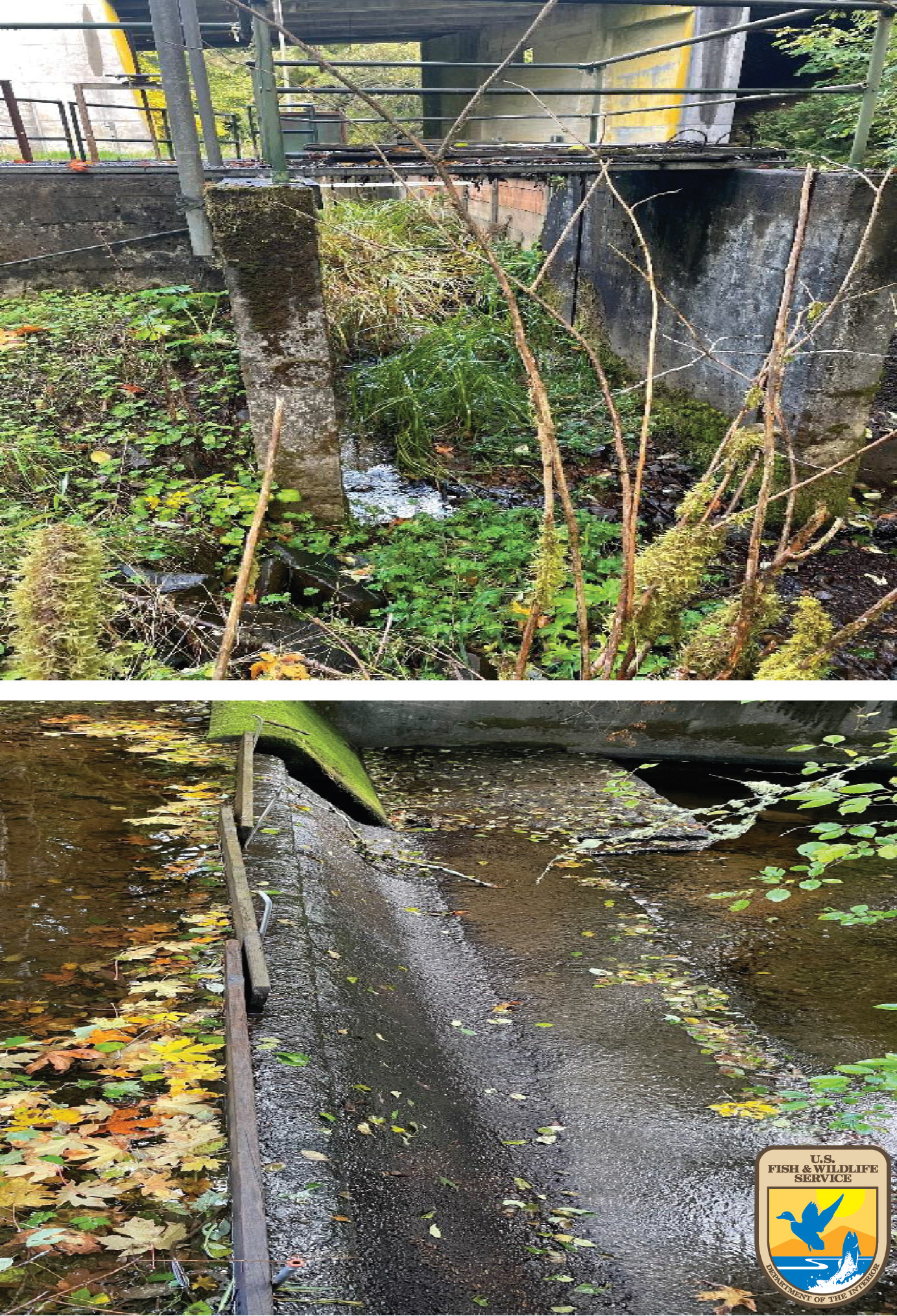
Prior to Restoration: Crest of the Diversion Dam 3 (above) and dam infrastructure to be decommissioned (below).
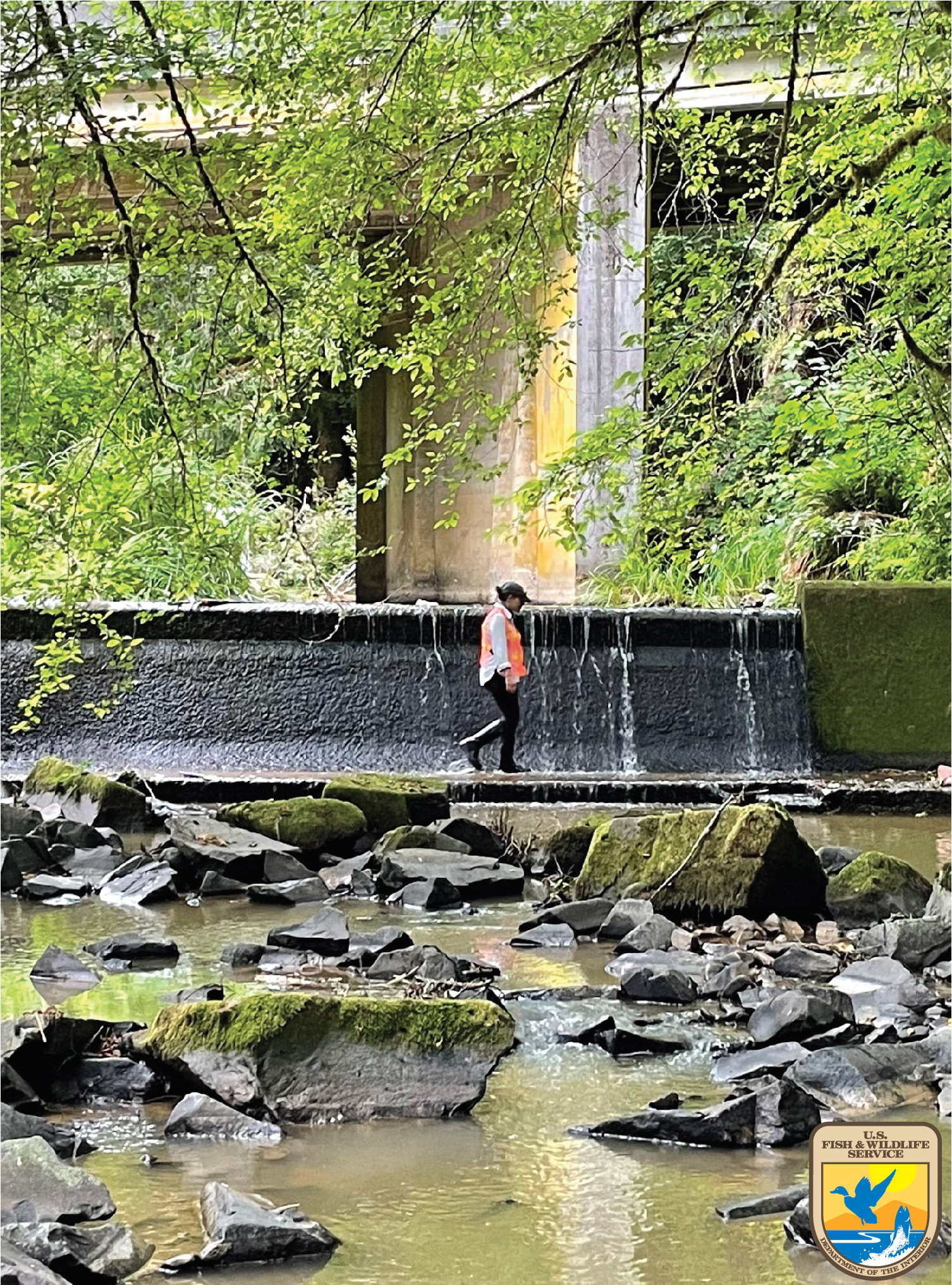
Prior to Restoration: Diversion Dam 3 with ODOT 202 abutment in the background during fish salvage phase.

During Restoration: USFWS Staff (with help from Forrest Service staff). Electro-fishing for native lampreys during the fish salvage phase. ODFW staff led the overall fish salvage effort. Inlay shows lamprey recovered from pools.
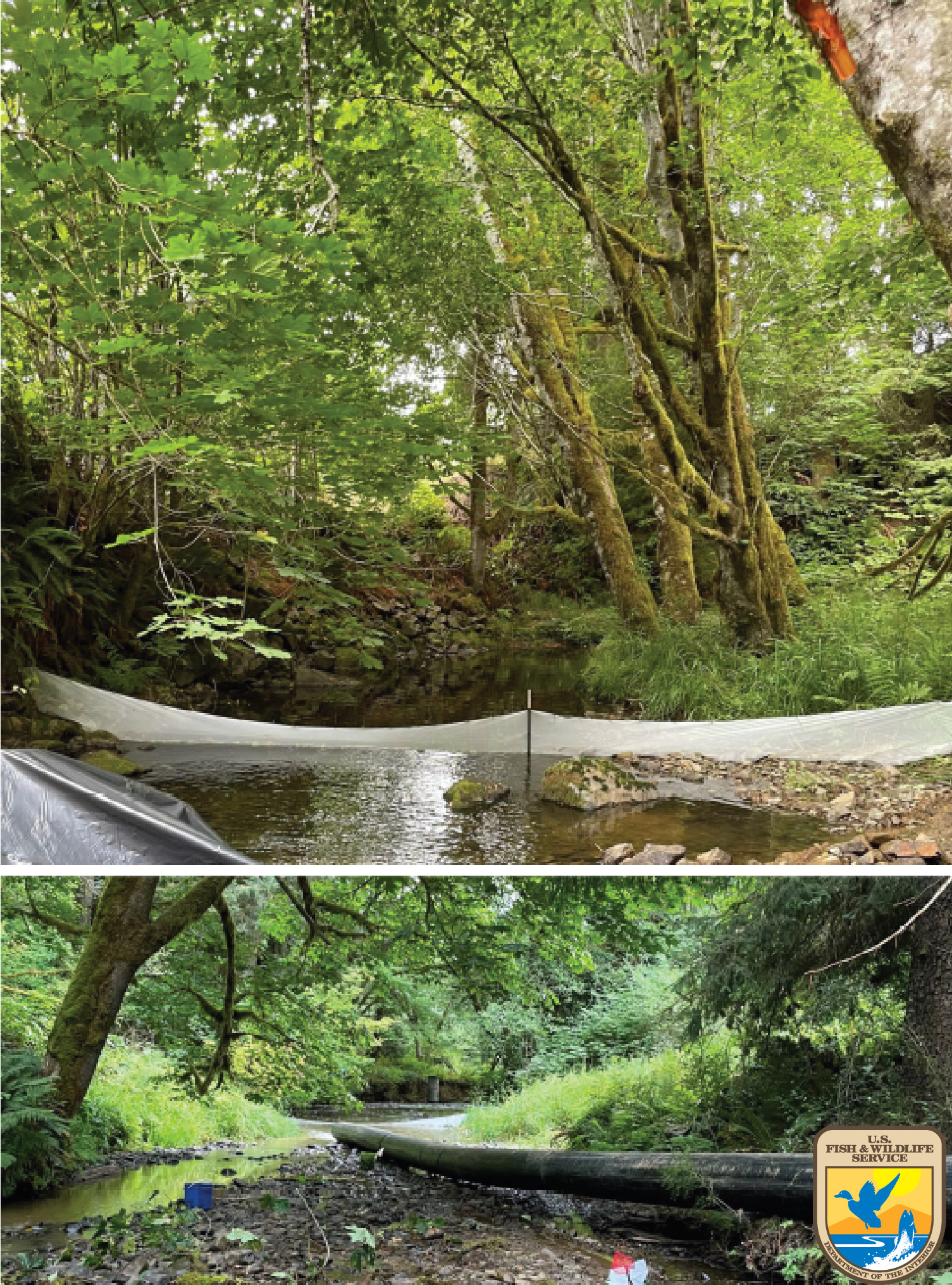
During Restoration: Up and downstream blocknets were set to create a fish exclusion zone (upper). Dewatering was via a fused pipe (lower)
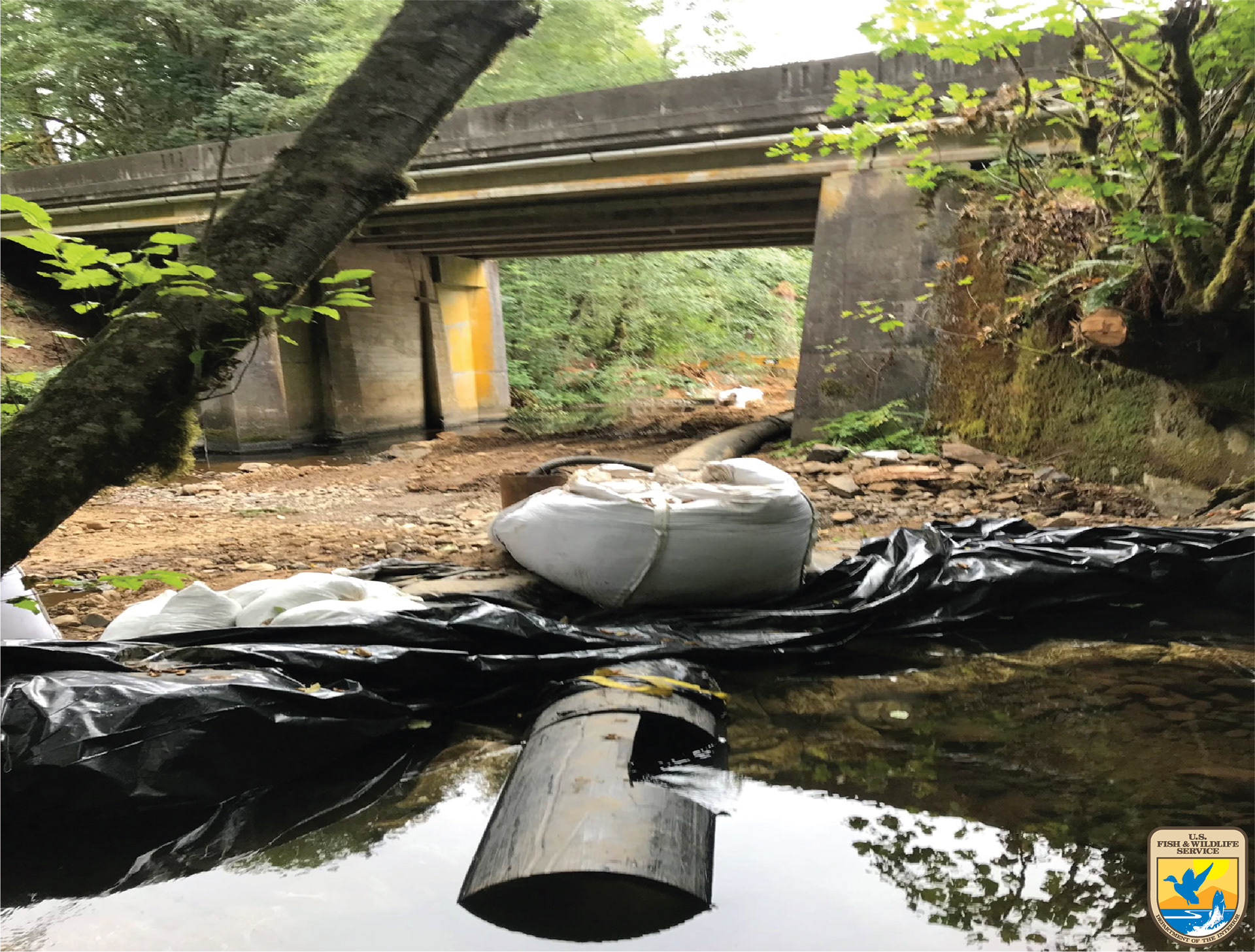
During Restoration: Upstream coffer dam (located below fish block net and within fish exclusion zone) and a gravity feed into a fused pipe that moved fresh water to the stream below the construction zone.
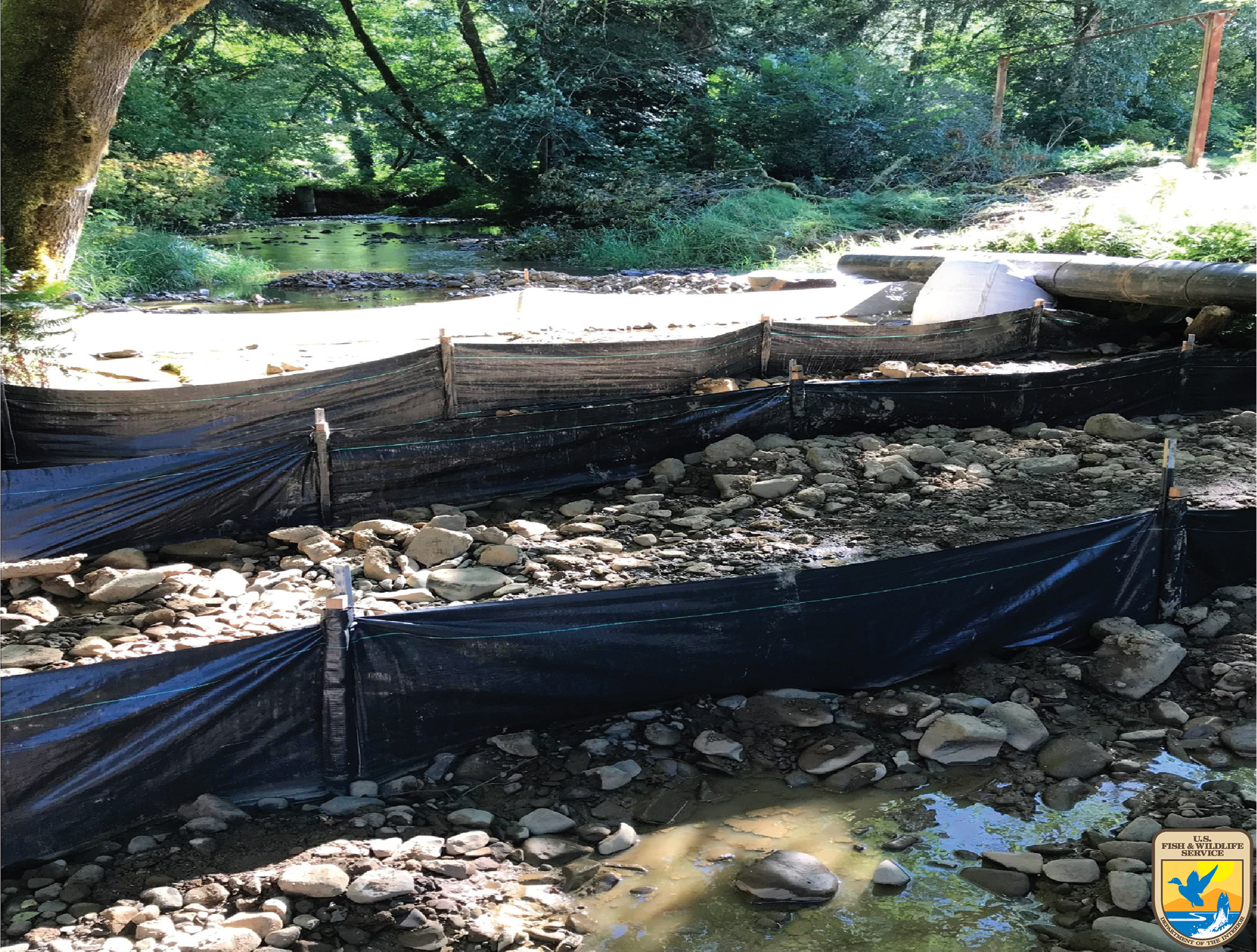
During Restoration: Downstream containment consisted of a coffer dam (above photo view), 3 layers of sediment containment, the fish block net signaling the end of the fish exclusion zone, and the water diversion return.
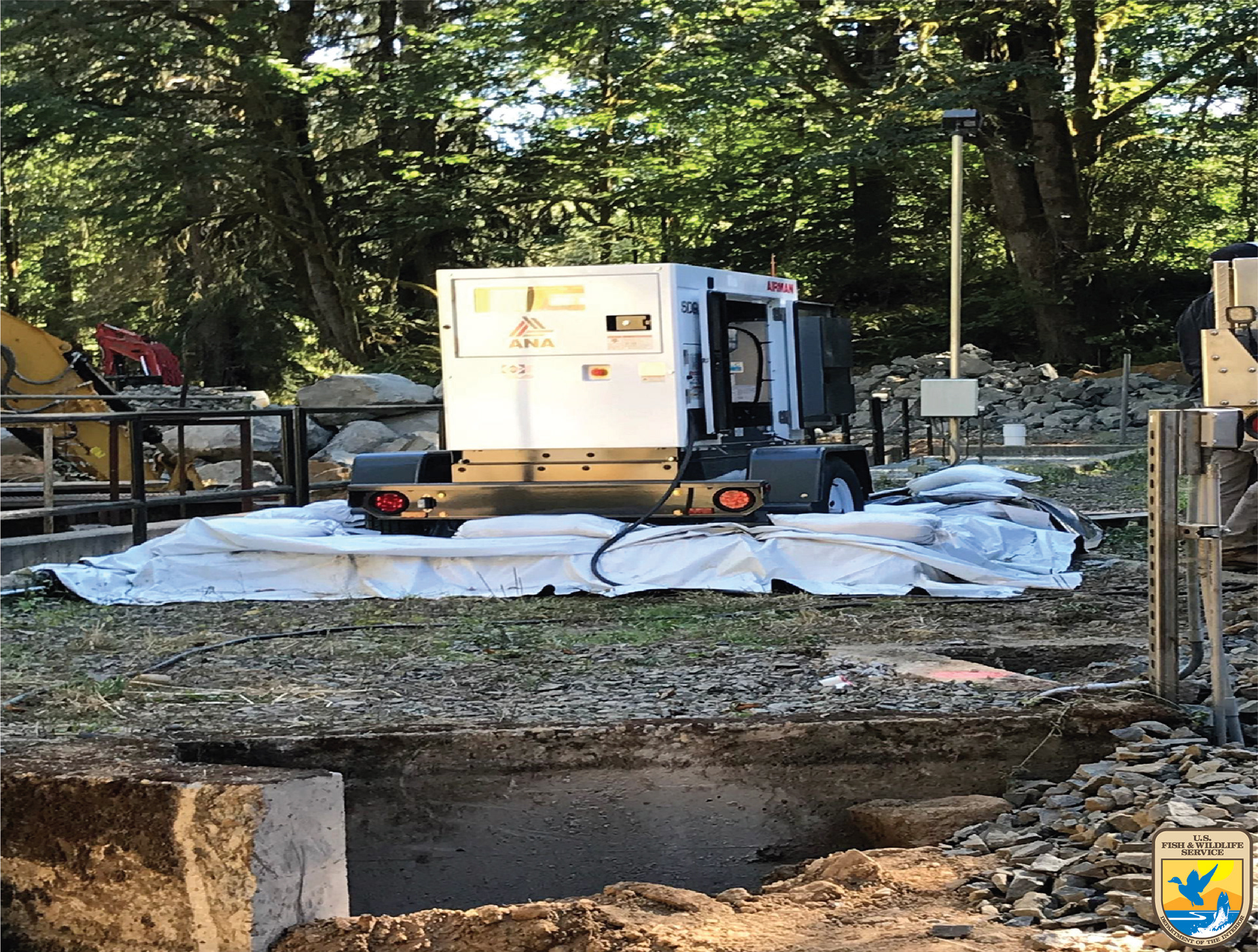
During Restoration: Pumps were placed in impervious basins to contain any fuel spills.
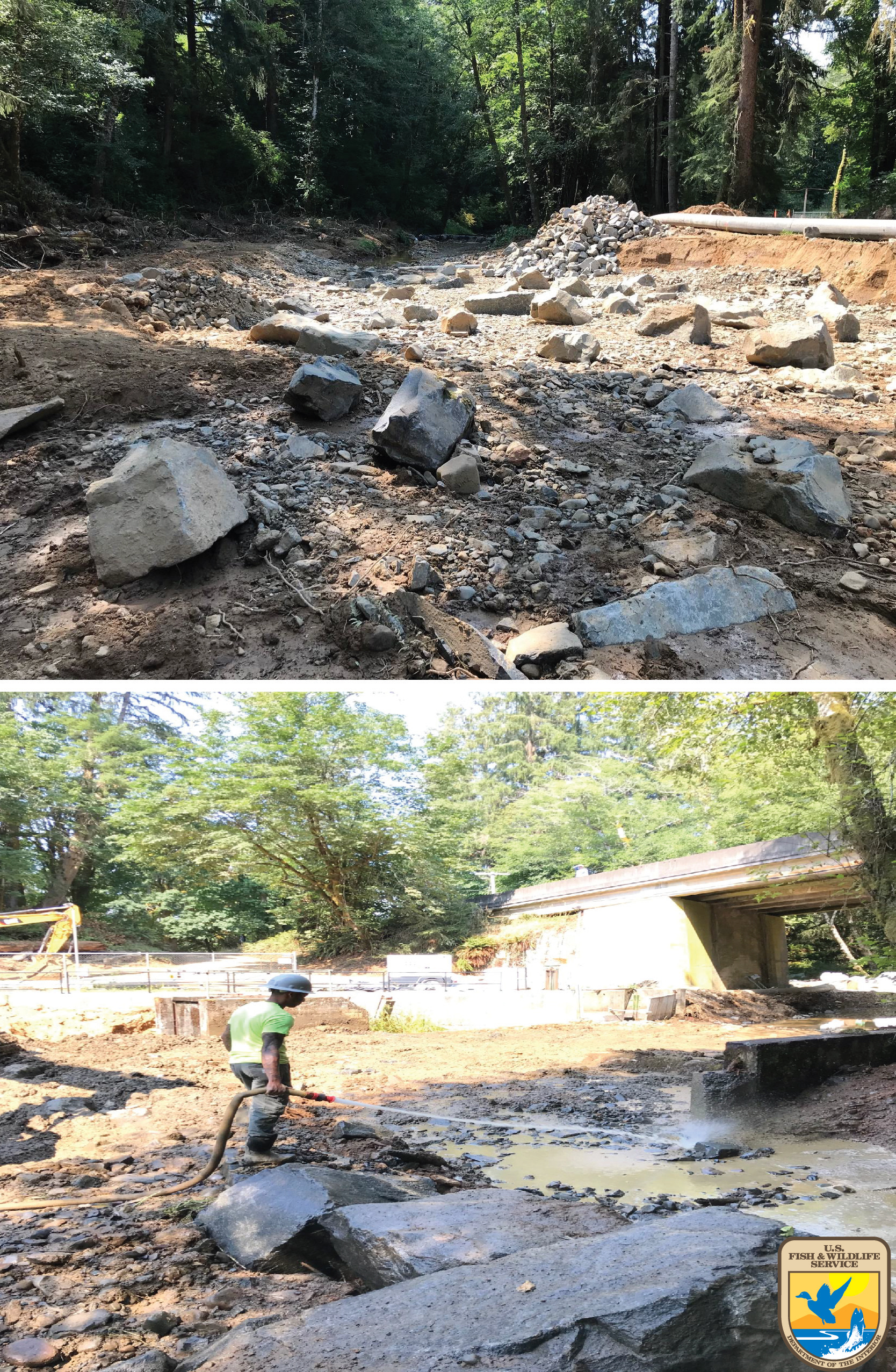
During Restoration- Above: Structural elements of the roughened channel were placed prior to adding engineered stream simulation mix. Below: After placing smaller cobbles and gravels, materials were power washed to ‘seal’ the channel. The goal was to have water ponding on the surface in each constructed section before moving to the next.

During Restoration: the stream simulation mixture overlays larger structural elements. Power washing fine materials into this mixture has been done to ‘seal’ the channel - leaving water ponded on the surface. The former dam location is indicated by black arrows. Highway 202 abutment is visible upstream.

During Restoration: Turbidity control measures during power washing fine materials into streambed mixture included a coffer dam, 3 layers of sediment fabric, and a pump to re-circulate any turbid water that migrated below these areas. Water would be pumped back up into the channel to help seal it.
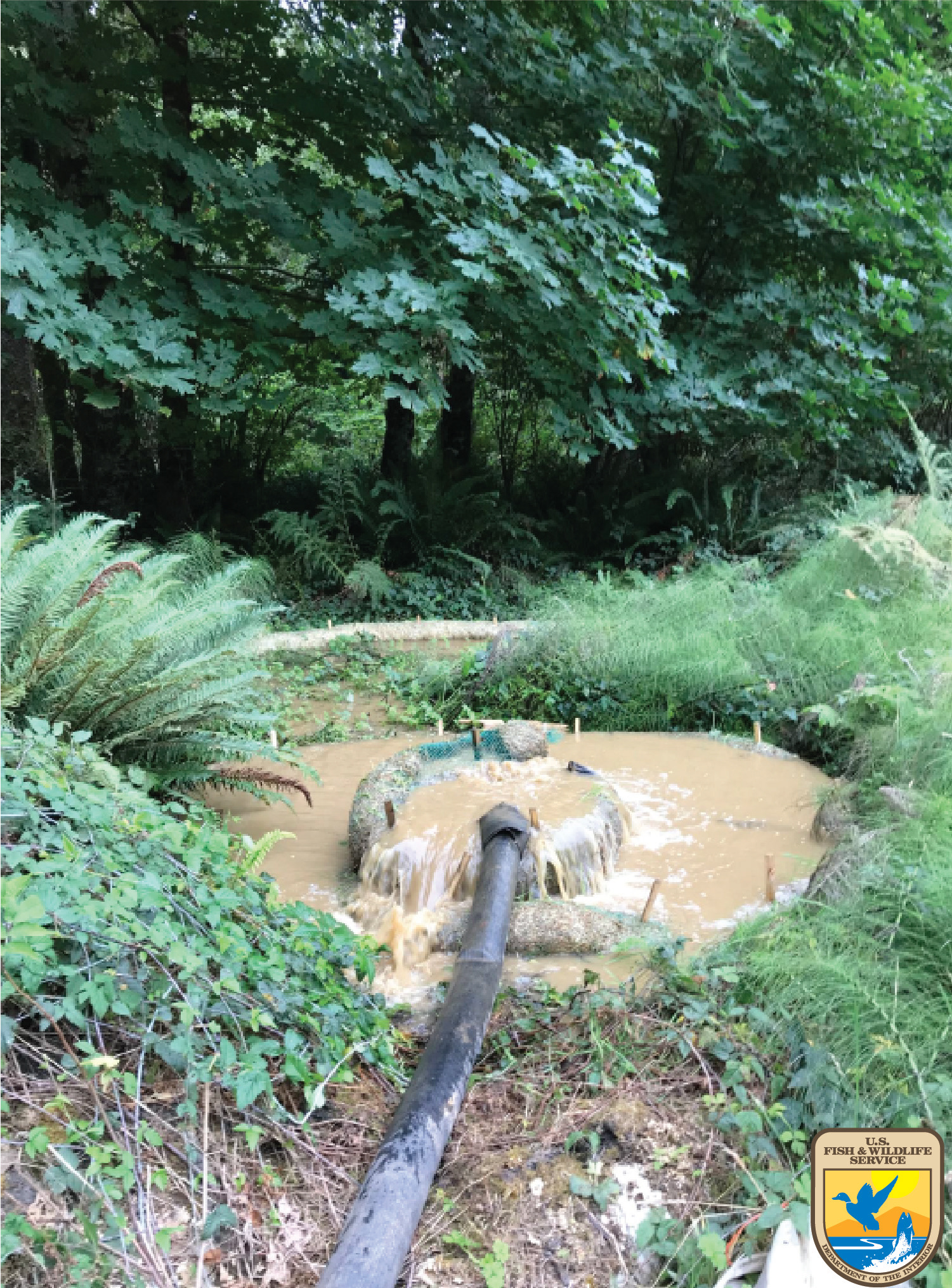
During Restoration: Turbidity control measures during power washing fine materials into streambed mixture also included pumping ‘construction’ water (water used to jet fines into streambed) into the adjacent wooded uplands to filter it.
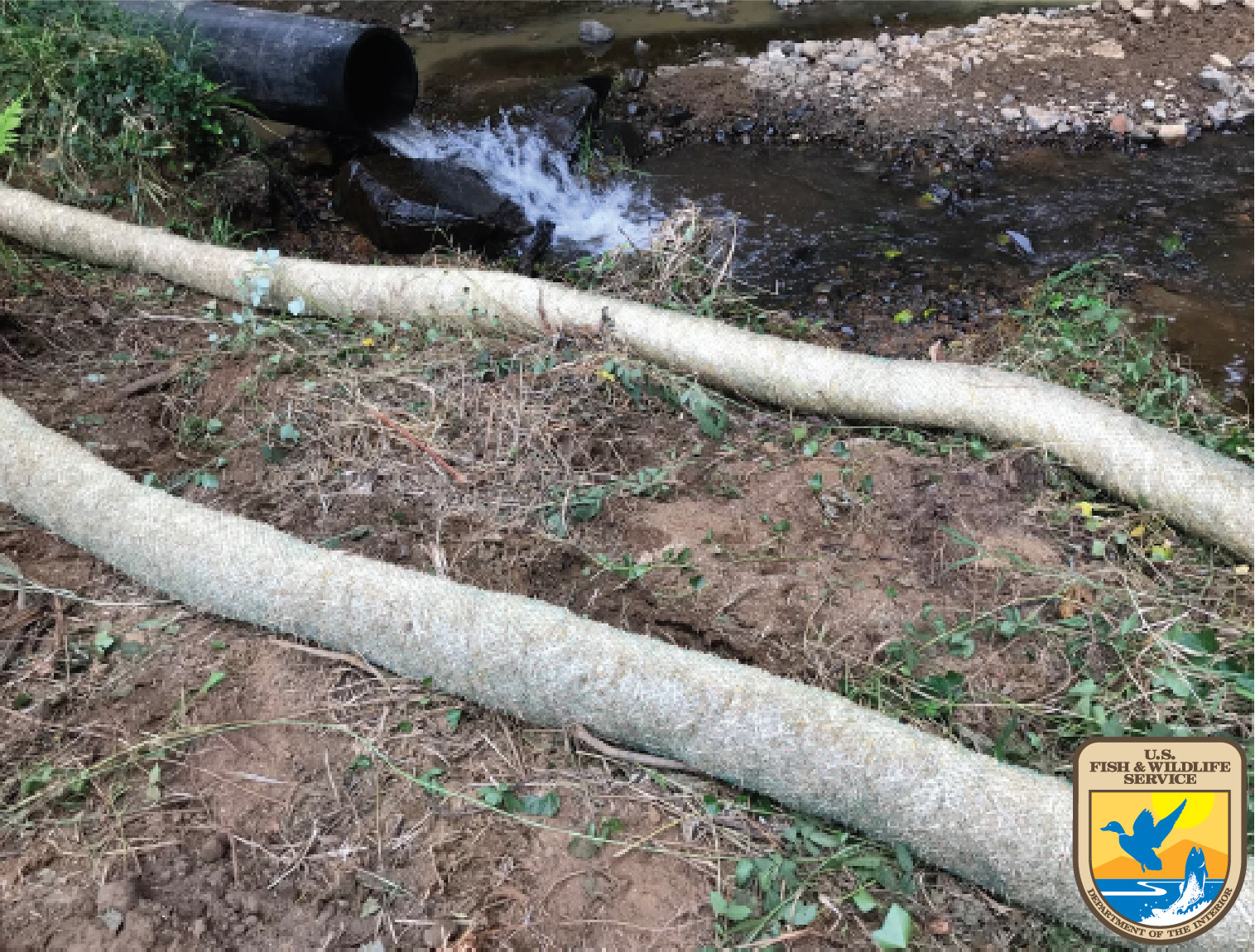
During Restoration: sediment and erosion control measures also included placing straw wattles at the junction of bare soil and stream interface. Upon completion of construction phase, all bare soils were hydro-seeded. Native wood shrubs and tress will be planted in the appropriate early winter planting window.

Fish Passage Restoration before (above photographed on October 2021) and after (below photographed on September 14, 2022).
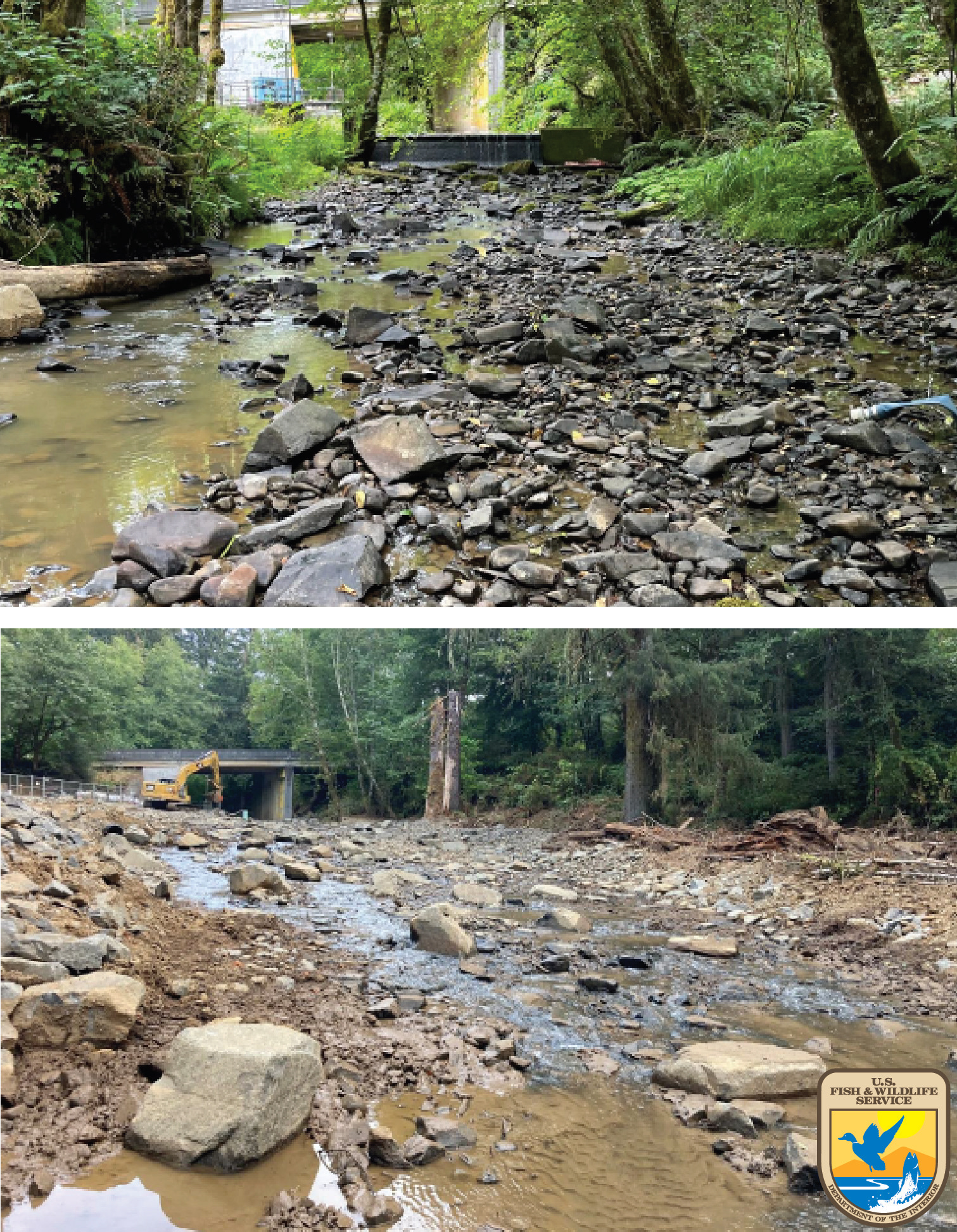
Fish Passage Restoration before (above photographed on August 10, 2022) and after (below photographed on September 14, 2022).

202 Abutment Prior to Restoration in August 2022. Above: Looking downstream. Below: Looking upstream.


